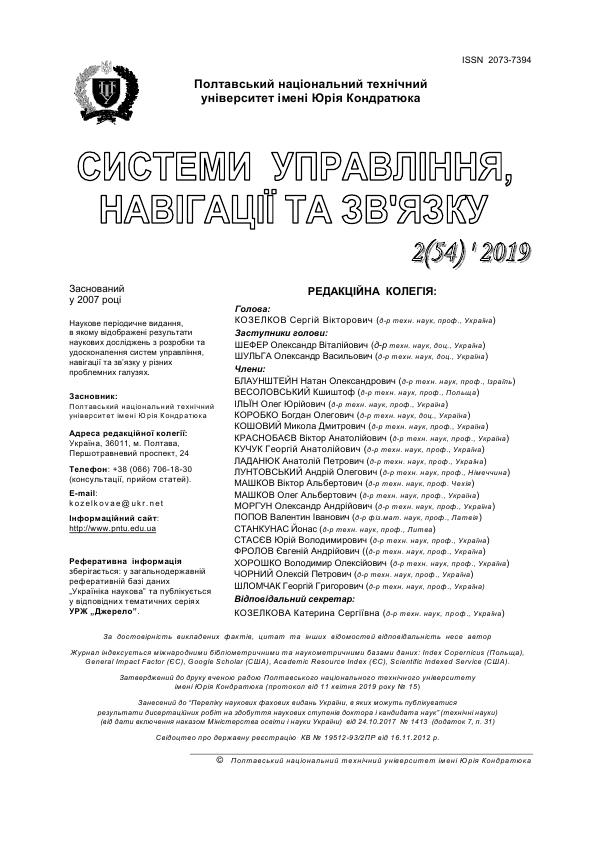MODEL OF PROCESSES FORMATION RELATED IN EDUCATIONAL AND PRODUCTION SYSTEMS BASED ON USED ONTOLOGICAL ENGINEERING
DOI:
https://doi.org/10.26906/SUNZ.2019.2.135Keywords:
educational systems, manufacturing, model of process formation, ontological engineering, production rulesAbstract
In the work the model of the formation of processes occurring in educational and production systems based on used ontological engineering is given. The model is based on the terminological system of the subject field "Organization and functioning of the higher educational institution", the terms of which are interconnected by hyperonomic relations. The main purpose of constructing a terminology system is to separate from the terminology series three terms groups, that is, their preliminary classification. Such a classification involves the ordering of certain terms in order to search for homogeneous relationships and relationships between them. The level of the root concept has three terms and their notions that form the three branches of concepts. The enlarged scheme of terminology of the subject field "Organization and functioning of the higher educational institution" is given. The term "higher education" is chosen as the root term, which specifies the peculiar size of the terminological tree of the subject area "Organization and functioning of the higher educational institution". Three branches of terms form a terminological tree, which covers the subject area by its definitions. The first branch involves the use of the relations "general - partial" and "genus - species". The second branch will be formed on a spacious temporal relationship or as it knows temporal relations, as well as causal relationships between certain concepts. The third branch, in the root of which is the term "pedagogy of high school", implies any relationship between lower terms. The resulting terminological system of the subject field is represented as an ontological model whose structure has a tree-like appearance. Such a representation enables to formalize the subject field. The usefulness of this terminology system is that it can become the basis for a plurality of academic disciplines, called "Introduction to a specialty". In addition, the vocabulary provides a methodological basis for teachers who create or update work syllabuses at the stage of thinking about the names of the training modules, as well as annotations to them in order to create an enlarged terminology tree of the discipline, which will be the basis for filling it with the educational material.Downloads
References
Christensen C. M., Eyring H. J. The innovative university: Changing the DNA of higher education from the inside out. San Francisco: Jossey-Bass, 2011. 512 p.
Подоляк Л. Г., Юрченко В. І. Психологія вищої школи: навч. посіб. Київ : Філ-студія, 2006. 320 с.
Фіцула М. М. Педагогіка : навч. посіб. для студентів вищих педагог. закл. Київ : Академвидав, 2007. 560 с.
Метешкін К. О., Морозова О. І. Технологія формалізації процесів в системах навчання, освіти та виробництва // Земельне адміністрування: особливості формування та сучасні технології реалізації : монографія / за заг. ред. К. А. Мамонова. Харків : ФОП Мезіна В. В., 2018. С. 274–282.
Merlac V. Resourses Distribution Method of University e-learning on the Hypercovergent platform / V. Merlac, S. Smatkov, N. Kuchuk, A. Nechausov // Сonference Proceedings of 2018 IEEE 9th International Conference on Dependable Systems, Service and Technologies. DESSERT’2018. Ukraine, Kyiv, May 24-27, 2018. – P. 136-140. DOI: 10.1109/DESSERT.2018.8409114
Amin Salih M., Potrus M.Y. A Method for Compensation of TCP Throughput Degrading During Movement Of Mobile Node. ZANCO Journal of Pure and Applied Sciences. 2015. Vol. 27, No 6. P. 59–68.
Saravana Balaji B., Karthikeyan N.K., Raj Kumar R.S. Fuzzy service conceptual ontology system for cloud service recommendation. Computers & Electrical Engineering, 2018. Vol. 69, P. 435-446, DOI: https://doi.org/10.1016/j.compeleceng.2016.09.013
Saravana Balaji B, Mohamed Uvaze Ahamed, Eswaran C, Kannan R, “Prediction-based Lossless Image Compression”, Lecture Notes in Computational Vision and Biomechanics (Springer), Volume 30, No 1, 2019, pp.1749 – 17961, DOI: https://doi.org/10.1007/978-3-030-00665-5_161
Saravanan S., Hailu M., Gouse G.M., Lavanya M., Vijaysai R. (2019) Design and Analysis of Low-Transition Address Generator. In: Zimale F., Enku Nigussie T., Fanta S. (eds) Advances of Science and Technology. ICAST 2018. Lecture Notes of the Institute for Computer Sciences, Social Informatics and Telecommunications Engineering, vol 274. Springer, Cham, DOI: http://doi.org/10.1007/978-3-030-15357-1_19
Semenov S. Development of graphic-analytical models for the software security testing algorithm / S. Semenov, O. Sira, N. Kuchuk // Eastern-European journal of enterprise technologies. – 2018. – № 2/4(92). – P. 39-46.
Кучук Н. Г. Уменьшение задержки транзакций e-learning в компьютерных сетях гиперконвергентной архитектуры [Електронний ресурс] / Н. Г. Кучук, А. А. Можаев, С. И. Шматков, Н. В. Косенко // Сучасний стан наукових досліджень та технологій в промисловості. - 2018. - № 2. - С. 19-24
Донець В. В. Моделювання інформаційної системи e-learning з використанням генетичних алгоритмів / В. В. Донець, Н. Г. Кучук, С. І. Шматков // Системи управління, навігації та зв'язку. - 2018. - Вип. 3. - С. 153-156.
Зиков І. С. Синтез архітектури комп'ютерної системи управління транзакціями e-learning [Електронний ресурс] / І. С. Зиков, Н. Г. Кучук, С. І. Шматков // Сучасні інформаційні системи. - 2018. - Т. 2, № 3. - С. 60-66.
Кибернетическая педагогика: онтологический инжиниринг в обучении и образовании : монография / К. А. Метешкин, О. И. Морозова, Л. А. Федорченко, Н. Ф. Хайрова. Харьков : ХНАГХ, 2012. 207 с.




